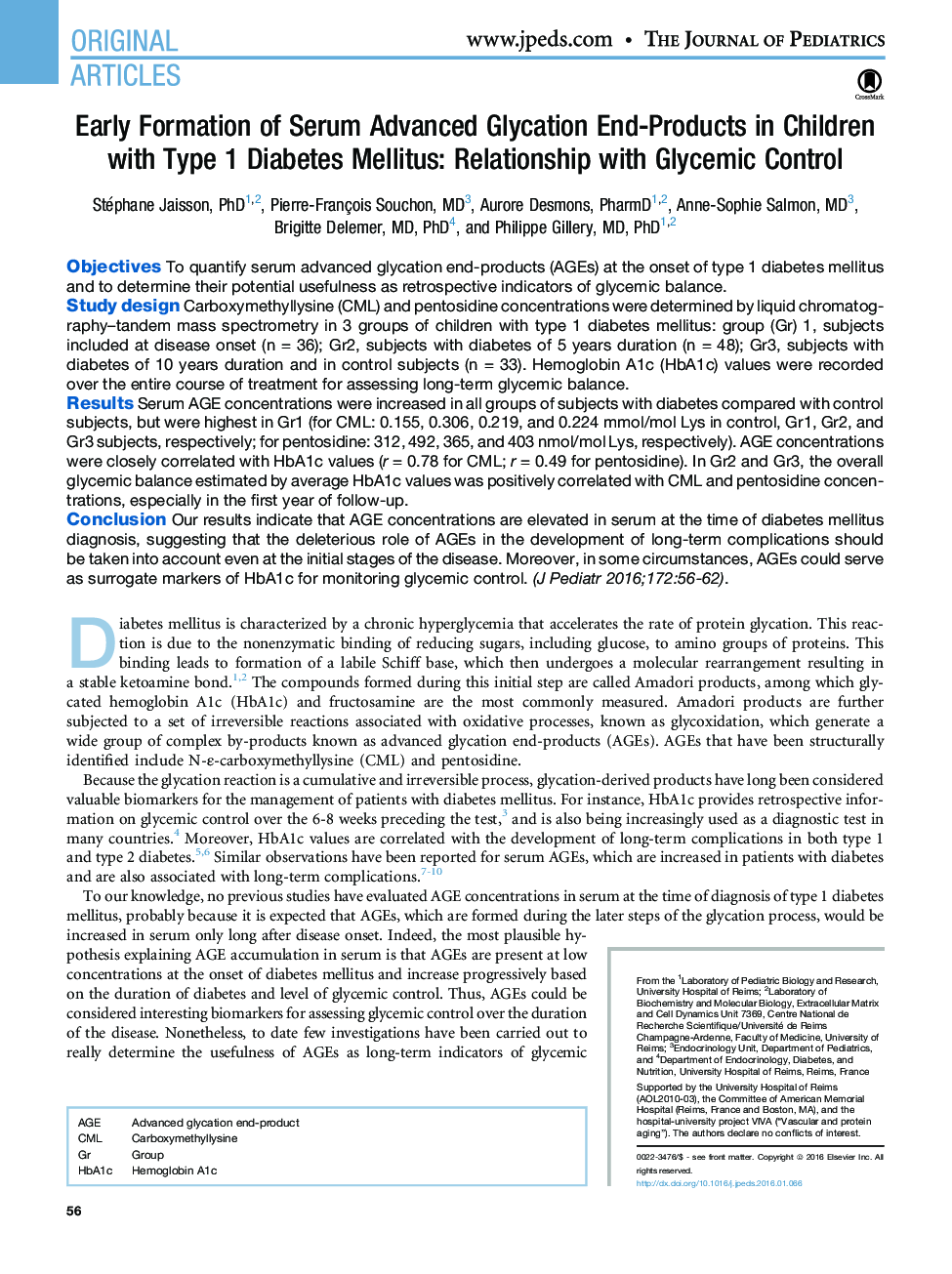| Article ID | Journal | Published Year | Pages | File Type |
|---|---|---|---|---|
| 4164456 | The Journal of Pediatrics | 2016 | 7 Pages |
ObjectivesTo quantify serum advanced glycation end-products (AGEs) at the onset of type 1 diabetes mellitus and to determine their potential usefulness as retrospective indicators of glycemic balance.Study designCarboxymethyllysine (CML) and pentosidine concentrations were determined by liquid chromatography–tandem mass spectrometry in 3 groups of children with type 1 diabetes mellitus: group (Gr) 1, subjects included at disease onset (n = 36); Gr2, subjects with diabetes of 5 years duration (n = 48); Gr3, subjects with diabetes of 10 years duration and in control subjects (n = 33). Hemoglobin A1c (HbA1c) values were recorded over the entire course of treatment for assessing long-term glycemic balance.ResultsSerum AGE concentrations were increased in all groups of subjects with diabetes compared with control subjects, but were highest in Gr1 (for CML: 0.155, 0.306, 0.219, and 0.224 mmol/mol Lys in control, Gr1, Gr2, and Gr3 subjects, respectively; for pentosidine: 312, 492, 365, and 403 nmol/mol Lys, respectively). AGE concentrations were closely correlated with HbA1c values (r = 0.78 for CML; r = 0.49 for pentosidine). In Gr2 and Gr3, the overall glycemic balance estimated by average HbA1c values was positively correlated with CML and pentosidine concentrations, especially in the first year of follow-up.ConclusionOur results indicate that AGE concentrations are elevated in serum at the time of diabetes mellitus diagnosis, suggesting that the deleterious role of AGEs in the development of long-term complications should be taken into account even at the initial stages of the disease. Moreover, in some circumstances, AGEs could serve as surrogate markers of HbA1c for monitoring glycemic control.
